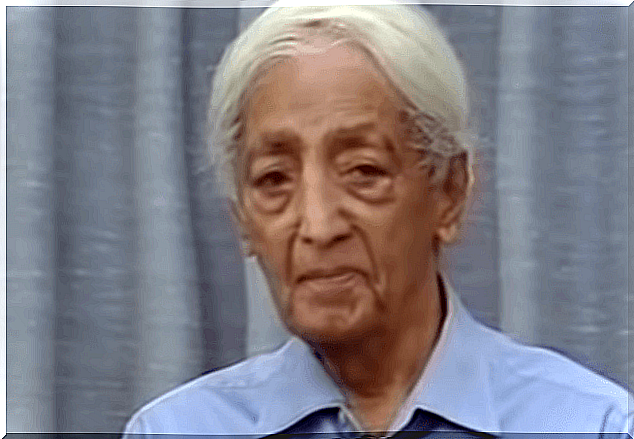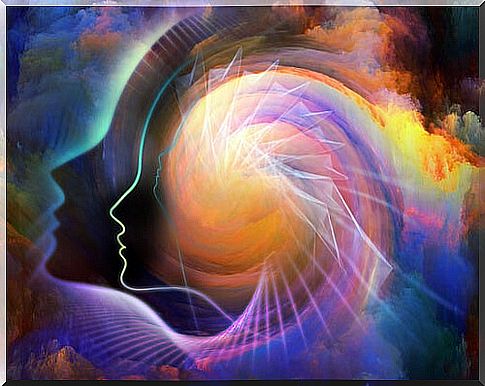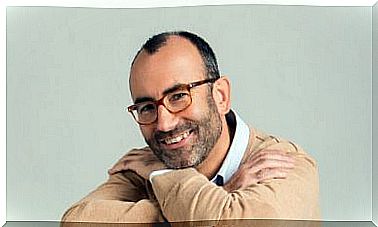Jiddu Krishnamurti, Truth Is A Land Without Roads

Jiddu Krishnamurti is considered one of the most outstanding spiritual leaders of the 20th century. Without reaching the age of majority, the Theosophical Society chose him to deliver his wisdom to the world. He was trained for this in an organization called the Order of the Eastern Star, of which he would end up being the leader.
Despite having been trained in that order for twenty years, Krishnamurti finally rejected his tenure in it and it was then that he embarked on a personal psychic expedition, spending the rest of his life traveling the world, lecturing on the urgent need for change. Worldwide.
He was not part of any religious group and his work focused on developing an argument that indicates why it is good for humanity to free itself from fear, anxiety, jealousy, pain and anger. At the end of his life, he left a great legacy in the form of speeches and literature, interviews, letters, and publications.

Early life
Jiddu Krishnamurti was born into a Hindu Brahmin family in a small town in southern India. As a child he suffered from various illnesses and part of his family came to consider him mentally unstable. Some sources suggest that he suffered mistreatment from his father and some teachers.
When he was 10 years old, his mother and sister passed away. This affected him deeply for a long period of time. However, little Krishnamurti found peace during those years in nature. In 1909, he had an encounter with Charles Webster Leadbeater, an alleged soothsayer who claimed to be impressed by the boy’s aura; It was when he was proclaimed the future guide of the world and of humanity.
Under the protection of the Theosophical Society to which Webster belonged, he was educated in Adyar and later abroad, where he was adopted by another member of the organization, Dr. Annie Besant, to whom he was joined by deep affection and in which he found a mother figure again.
The Theosophical Society and Jiddu Krishnamurti
In 1911, the organization created the Order of the Eastern Star, for its new teacher, Krishnamurti. That same year he was transferred to London and it was there that he gave his first speech and published his first writings. For the next three years he traveled through Europe surrounded by theosophist followers. After the Second World War, he undertook a world tour in which he would deliver numerous sermons.
In 1922, he traveled to California, where he met what would be one of the most influential people in his life: Rosalind Williams, with whom he fell in love and with whom he founded the Happy Valley School. However, the relationship did not work out and she ended up marrying her best friend.
During that year, Krishnamurti went through what he described as “a very intense spiritual awakening” in which he experienced mystical union. His brother, who had accompanied him all those years, in which they made all the trips together, died a few years later, affected by tuberculosis.
After the death of his brother, Jiddu Krishnamurti lost faith in Theosophy, to the point that he managed to dissolve the organization. This created a lot of enmity among the followers of the organization.
Solo tours and new concerns
For the next 14 years he devoted himself to traveling, speaking, and writing. After this period he returned to India in 1947 to give a tour of lectures that would bring together thousands of young intellectuals who followed him.
During the 1960s, he tried some approaches to psychology and scientists of the stature of David Bohm, whose interest in metaphysics coincided with the ideas of Krishnamurti. He discarded from his life any idea of religion or political ideology, in the absolute conviction that these were the factors that divided humanity.
His teachings transcended man-made belief systems. He moved away from representing the figure of a guru and in his lectures he did not speak of traditions or schools of thought, but of his own knowledge about the human mind and its vision of the sacred. He took on the challenges that psychologists and scientists posed as his own.

The legacy of Jiddu Krishnamurti
Jiddu Krishnamurti lived to be 90, the age at which he died of pancreatic cancer. His ashes were scattered throughout India, England and the United States, the three most influential countries.
He had founded several schools around the world and also the Krishnamurti Foundation, which continues to work and runs several schools . His followers continue to work in non-profit organizations, under his name, imparting his teachings.
The truth is a land without roads
The core of Krishnamurti’s teachings is compiled in the statement he made in 1929, in which he said that Truth is a pathless land. He taught us that man cannot reach it through any organization or creed, or through dogmas, priests, or rituals. Neither does philosophical knowledge lead us to it. It can only be found through understanding and observing the contents of our own mind.
Man has surrounded himself with symbols, ideas and beliefs; your burden dominates your thinking and therefore your daily life and relationships. We define ourselves poorly in name and in the form of a superficial culture that we acquire by tradition. But our essence does not reside on the surface, but in the liberation of consciousness, where freedom is also found.









